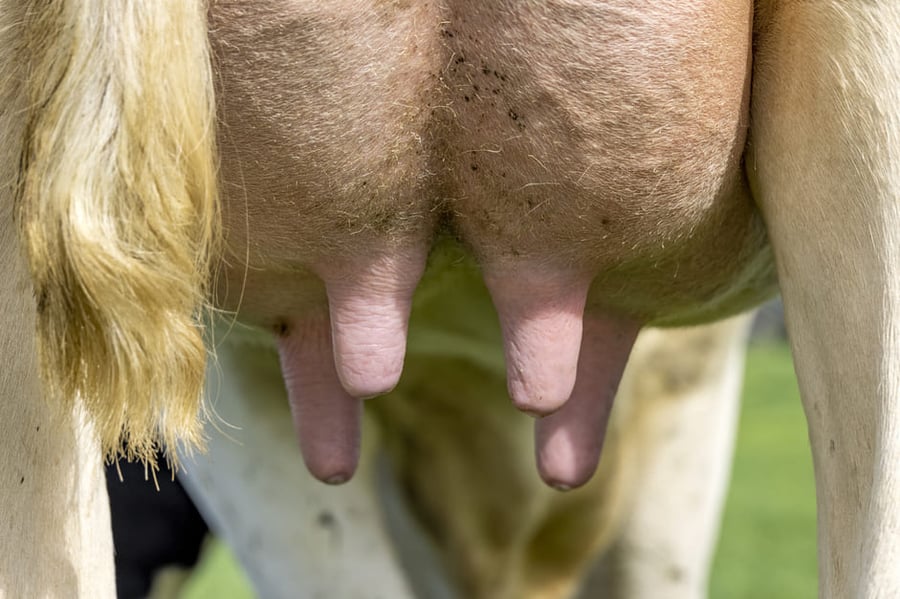Q fever is an infectious disease that affect many animal species, including ruminants, and humans. Depending on the specie, clinical signs may be slightly different. Nevertheless, major clinical signs encountered in humans, such as flu-like syndrome, lung disease or endocarditis are not common in ruminants. Indeed, Q fever symptoms in cattle and in small ruminants concern mainly the reproductive system.
Abortions, mortinatality and stillbirth are common Q fever symptoms in cattle, goats and sheep.
The most known symptom of Q fever in ruminants is abortion. Indeed, abortion is a main issue in farming as it is responsible for poor welfare and for production losses. Q fever can cause a large number of abortions in a short period of time. In extreme cases in small ruminants, it has been described that up to 90% of the animals may abort when Q fever is present in a herd. This is called an abortion storm.
In addition to abortion, premature kidding, lambing or calving as well as mortinatality and stillbirth may also occur. All together these symptoms are a main concern for farmers.
Other Q fever symptoms in cattle
Although abortions are both traumatic and spectacular, they are only the tip of the iceberg of the symptoms of the disease in ruminants. It has been shown that many other Q fever symptoms in cattle exist and concern the reproductive system. Even if these clinical signs are less visible than abortion and thus, many farmers consider them as a fatality or a lack of luck, they can cause economic losses and thus compromise the profitability of the farm.
Thus, in cattle Q fever can be responsible for:
- Metritis and endometritis. It has been shown that herds in which Q fever was present (as evidenced by the presence of the bacterium in Bulk Tank Milk), were 2.5 times more likely to have a high incidence of metritis and endometritis. In addition, a histological study showed the presence of Coxiella burnetii (the bacterium that causes Q fever) in the macrophages of the uterus of cows with chronic endometritis.
- Retained placenta. A field study recently carried out in Hungary showed that cows having a placenta infected by Coxiella burnetii were 12 times more likely to retain placenta after parturition.
- Infertility. Another field study comparing herds in which Q fever was controlled by vaccination with infected but unvaccinated herds found that the success rate at first insemination was 28% lower in non-vaccinated herds. The delay between calving and conception was also 14 days longer.
- Mastitis. More surprisingly, mastitis is also part of the Q fever symptoms in cattle. It has been shown that an infected cow was 2.35 more likely to experience a clinical mastitis. Another study also highlighted that cows shedding Coxiella burnetii in the udder were more likely to have a sub-clinical mastitis.

Q fever symptoms in cattle are various. In opposition with small ruminants, abortion is not the main clinical sign of the disease. Other clinical signs, apparently less serious, are responsible for health disorders, poor welfare, and economics losses. Although the disease may be mistakenly considered sub-clinical, farmers should be aware that many reproductive disorders can be linked to Q fever. Therefore, when a herd shows a decline in reproductive performance, a proper Coxiella burnetii diagnosis should be made and if Q fever is present on the farm, it should be controlled.
About the author
Philippe Gisbert (Ruminants Global Technical Manager)
Philippe Gisbert started his career in 1994 as a Vet practitioner working with companion and farm animals for over 9 years. He then became Health Affairs Manager for Group Agena (artificial insemination company). In 2008 he joined Eurofins – Laboratoire Coeur de France as Animal Health Unit Manager where he worked for 7 years until he joined Ceva France as Technical Manager Ruminants (Infectiology, Vaccines and Diagnostic). Since 2020 he is Global Technical Manager for Biologicals, Udder Health and Antiinflammatories. He is a member of SIMV diagnostic and anti-infective technical groups and has integrated different working groups of ANSES and UNCEIA related to epidemiology, antibiotic resistance and reproduction in livestock.
Explore author’s articlesFrequently Asked Questions
-
What causes Q fever in cattle?
Coxiella burnetii is the bacterium responsible for Q fever. -
What is the best treatment for Q fever?
As, in ruminants, medical treatment (antibiotics) are not efficient to treat the disease, the best way to control Q fever is to prevent it by biosecurity measures and vaccination. However, in an infected herd, vaccination has also been shown to reduce the clinical impact of the disease and to reduce the shedding of the bacteria by the animals.

.webp)
Leave your comments here